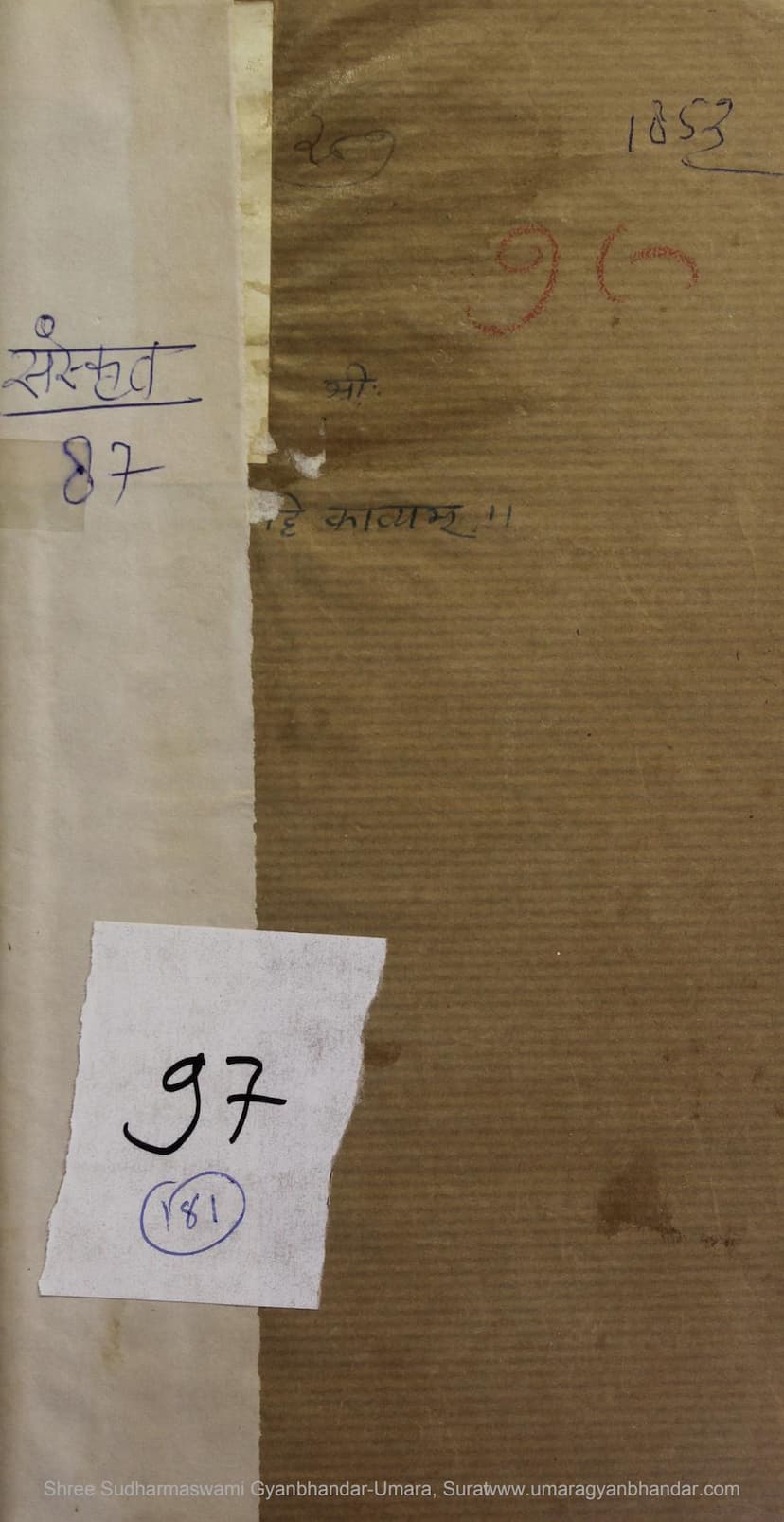Bhattikavyam
Added to library: September 1, 2025

Summary
Here's a summary of the provided Jain text, which appears to be a scholarly edition of the Bhattikavya, a Sanskrit epic poem by Bhatti Mahakavi, along with its commentary "Jayamangalā" by Jayamangala. The provided text seems to be an introduction and the initial sections of the epic, detailing its structure, content, and the editorial notes.
Overall Description:
The text is a publication of "The Bhattikavya of Bhatti" with the commentary "Jayamangalā" by Jayamangala. It's presented as the Seventh Edition, published in Bombay by Pandurang Javaji in 1928. The editors are identified as the late Vinayak Narayan Shastri Joshi and Wasudeo Laxman Shastri Pansikar. The catalog link points to a Jain repository, indicating its significance within Jain literature or scholarly access, though the text itself focuses on the Sanskrit epic, not necessarily its direct Jain theological content in the introductory pages.
Key Sections and Content:
-
Title Page and Publisher Information: Clearly states the title, author, commentary author, editors, publisher, edition, publication year, and price. It also notes copyright rights reserved by the publisher.
-
Introductory Verses (Bhatti Kavya Sudharana): Several Sanskrit verses are included, likely by the editors or a precursor, praising the grammatical and poetic value of Bhattikavya. They highlight the importance of grammar, vocabulary, prosody, and ornamentation in poetry, suggesting Bhattikavya excels in all these aspects.
-
Publisher's Note (Vishesh Suchana): This section details the editorial methodology used in this edition.
- Punctuation for Sandhi and Compound Breaking: Explains the use of vertical lines (|) above letters to indicate sandhi (joining of words) for easier padachheda (word segmentation). It also mentions a hyphen (-) below a combined letter when word separation isn't possible due to sandhi, indicating the original word parts.
- Preservation of Original Text: States that where discrepancies were found between the original text and the commentary in previous editions, the original text was maintained, and corrections were made in the commentary, or vice-versa.
- Editorial Errors: Acknowledges the possibility of remaining errors due to the first-time nature of certain editorial tasks and requests readers to inform the publisher of any mistakes for future correction.
-
Structure of Bhattikavya: A detailed breakdown of the work is presented:
- Kandas (Books/Sections): Lists four kāṇḍas: Prakīrṇa-kāṇḍa (miscellaneous), Adhikāra-kāṇḍa (disciplinary), Prasanna-kāṇḍa (joyful), and Tiṅanta-kāṇḍa (verbal roots/tenses).
- Segments (Vargas) by Grammar: Mentions 22 segments classified according to grammatical principles.
- Cantos (Sargas) by Narrative: Lists 22 cantos organized by the narrative of Rama's life, starting with "Rāma Sambhava" and covering events up to the return to Ayodhya.
- Content of Prakīrṇa-kāṇḍa: Further details the content of the first kāṇḍa, including sections on word embellishments (Shabdālaṅkāra), meaning embellishments (Arthālaṅkāra), display of sweetness (Mādhurya-pradarśana), poetic sentiment (Bhāvikatva), and inclusion of languages (Bhāṣā-samāveśa).
- Content of Tiṅanta-kāṇḍa: Lists the thematic focus of the Tiṅanta-kāṇḍa, which seems to be the illustration of various verb conjugations (lat, luṅ, liṭ, laṅ, etc.) through narrative examples.
-
Index of Verses (Ślokānukramaṇikā): A substantial portion of the document is dedicated to an index of verses, listing thousands of Sanskrit verses (identified by their starting words) and their corresponding verse numbers within the text. This serves as a comprehensive table of contents for the epic itself.
-
Beginning of the Text (Prathamaḥ Sargaḥ - Rāma Sambhavaḥ):
- Invocation: The text begins with an invocation of "Shree Sudharmaswami Gyanbhandar" and the publisher's website.
- Praise of Bhatti's Work: The first verse of the Bhattikavya itself is presented, along with the commentary. The commentary explains Bhatti's dual purpose: to demonstrate lakṣaṇa (grammatical rules and poetic principles) and lakṣya (examples of their application).
- First Canto Introduction: The commentary explains that the first Canto, Rāma Sambhava, is presented first due to its foundational nature in illustrating various grammatical principles and the overarching narrative of Vishnu's incarnation as Rama.
- Verse Analysis: The commentary then proceeds to analyze the first verse, "Abhūt Nṛpaḥ" (There was a king...), detailing the grammatical forms, the deity invoked (Vishnu/Rama), and the poetic devices used. It explains the meaning of the king's name "Dasharatha" and his relationship with the gods.
- Subsequent Verses: The text continues to present and analyze verses from the first canto, illustrating grammatical concepts like luṅ tense, sic augmentation, guṇa prohibition, ka and khac suffixes, and various metrical structures (ruchirā, upajāti).
Key Themes and Significance:
- Grammar and Poetry: The Bhattikavya is renowned for being a vyākaraṇa-kāvya, meaning it illustrates complex Sanskrit grammar rules through a poetic narrative. This text emphasizes that aspect through its structure and commentary.
- Exemplification: Bhatti's goal was to make grammar accessible and enjoyable through poetry, showcasing both the rules (lakṣaṇa) and their practical application (lakṣya).
- Editorial Rigor: The extensive editorial notes and the detailed index suggest a high degree of scholarly effort to present an accurate and usable version of the epic and its commentary.
- Preservation of Classical Literature: This publication from 1928 highlights the long-standing effort to preserve and disseminate classical Sanskrit literature, including Jain traditions' engagement with broader Indic literary heritage.
In essence, this text is a detailed academic edition of the Bhattikavya, aimed at making this grammatically rich epic poem accessible to students and scholars, with meticulous attention to linguistic and textual accuracy.